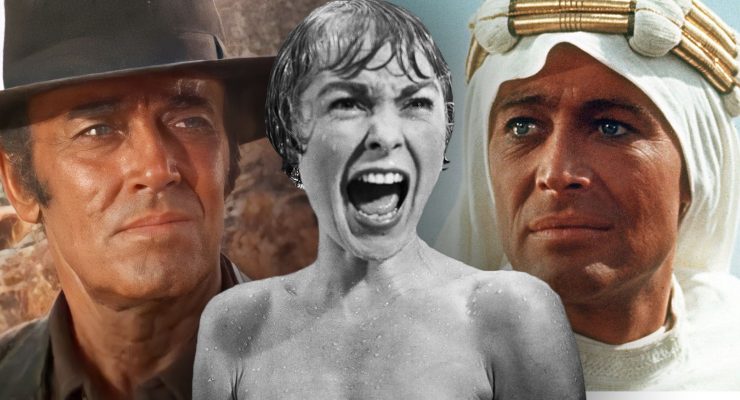Ginger Snaps, 2000.
Directed by John Fawcett
Starring Emily Perkins, Katharine Isabelle, Kris Lemche, Jesse Moss, Danielle Hampton, John Bourgeois, Peter Keleghan and Mimi Rogers
SYNOPSIS:
Two death-obsessed sisters must deal with the tragic consequences when one of them is bitten by a werewolf.
Werewolves have been a staple of horror films for decades, the story of a man turning into a monster often used as a metaphor for humanity’s inner animalistic urges and how the full moon is what finally brings it out. However, that’s not quite what we’re looking at for today’s entry. Today we’re taking a look at cult Canadian horror Ginger Snaps, a film that uses and subverts classic werewolf tropes to tell a decidedly more female-focused take on the familiar tale of giving in to the beast within.
Ginger Snaps stands out amongst werewolf horror films in that, for the most part, it changes or outright ditches many of the usual rules of the sub-genre. Instead of being a curse, lycanthropy, while still spreadable via bites, is also presented as a highly transformative STD, with a scene showing it being passed on via unprotected sex. The transformation of the titular Ginger (Katharine Isabelle) into a monster, in a change from the usual near-instant process of other films, is much slower, taking nearly the entire runtime to reach her final form. Her body gradually changing day by day as she grows more animalistic, growing hair where there was none before, her eyes changing colour and shape, teeth sharpening into fangs, and her face slowly reshaping into a snout. It’s an innovative way of depicting the transformation process in a way that subverts the usual cliches of the genre. Perhaps the most notable change from werewolf lore is that not once does the full moon come into the equation.
While werewolves often serve as a metaphor for our inner beast, Ginger Snaps instead uses it in a way that I don’t think I’ve seen done before or at least not that often, using the curse of lycanthropy as a metaphor for puberty. Ginger’s attack by a wolf coincides with her first period, with her transformation into a werewolf serving as an extreme depiction of the hormonal and physical changes that her body is currently undergoing. I’d really hate to see the alternate version of this story following a teenage boy. The sheer volume of ruined tissues would be horrifying. It’s a fresh take on the familiar genre that marks the film out amongst the sea of by the numbers werewolf films, almost like if David Cronenberg directed a remake of The Wolf Man. Although innovative, the metaphor does come across as heavy-handed given the near-constant references by Ginger’s mother and others to puberty, with these exchanges often followed by a scene of Ginger undergoing another shocking physical change.
Emily Perkins and Katharine Isabelle both give strong performances as sisters Brigette and the titular Ginger respectively the on-screen chemistry between the two making their relationship feel authentic. I initially struggled to care about the characters, finding them particularly irritating as they indulge in the stereotypical angst-ridden Goth teenager routine. However, as the story gets going and the two undergo their own narrative arcs, they started to grow on me, and I eventually came to enjoy the performances more. Perkins especially deserves credit for managing to take Brigette, a character who I especially disliked and managed to make me sympathise with her as she has to contend with bullies and her quest to save her increasingly monstrous sister. Isabelle’s increasingly manic performance as she grows from an angst-ridden teenager into a more confident but monstrous creature is highly entertaining, even as she slowly vanishes under increasingly heavy make-up.
While I appreciate the acting and story, the rest of the film is sadly lacking. The tone is a tad all over the place, not so much balancing comedy and horror as veering wildly between them like a drunk driver. So we have scenes of violence played relatively seriously, only for it to be followed by suburban hi-jinks as the sisters attempt to hide a dead body from their parents. The overall look and feel of the film don’t help things. The sometimes overly shaky camera work, the abundance of early 2000s rock music and, at times, questionable acting from the supporting cast often make it feel like I’m watching an unsold pilot episode for a Canadian TV teen horror drama. Perhaps no scene better exemplifies this than when Bridgette contends with a teenage werewolf harassing a young boy, with the cartoonish performances, silly camera angles and zany music being corny and cringe-inducing. Worst of all, though, I just found myself bored by the film, with it never quite managing to capture and hold my attention. I will at least give credit to the make-up and special effects teams for their work, with Ginger’s final form, while a bit rough around the edges, at least being a practical effect instead of a ropey CGI monster.
While I appreciated it taking an original approach to the werewolf genre, and I highly enjoyed performances of Perkins and Isabelle, I just couldn’t enjoy Ginger Snaps as a whole. The pacing is slow, the tonal shifts jarring, and the sometimes ropey presentation left me wanting. And I feel bad for saying this because of the significant cult following this film has, with passionate fans whose adoration has led to the creation of a beloved franchise. Yet,, while I’m always keen to join a cult following, I’m sorry to report that, despite my best efforts to like it, Ginger Snaps just wasn’t for me. However, this film is marmite, and while it didn’t do anything for me, maybe it will do something for you.
Flickering Myth Rating – Film: ★ ★ / Movie: ★ ★
Graeme Robertson














